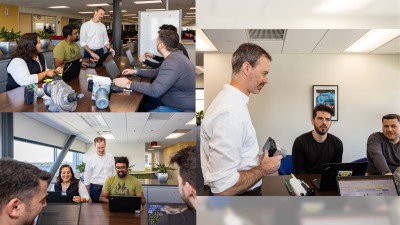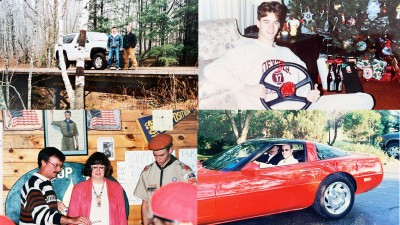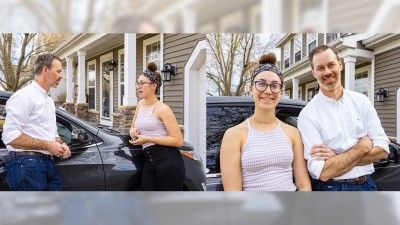A Tragedy Becomes a Driving Purpose in Life

Rich Nesbitt stands on the side of a curvy road where 28 years ago a tragedy occurred that would launch him to his professional purpose in life.
It was here a close high school friend was killed when she lost control of her car and crashed it into a tree that now bears a weathered memorial to her.

Two years later he lost another friend to the same type of accident.
Neither of these crashes may have happened today because of the safety technology Rich has been working on for over 20 years.
“Both lost control of their cars in a way that ESP (Bosch electronic stability program) would likely have prevented without them even noticing,” Rich says.
After burying two friends and seeing what their parents went through, Rich’s purpose in life became preventing tragedies like this.
“It’s my passion. It’s why I come to work early and why I leave late,” says Rich who is an engineer and vice president of product management for Bosch Chassis Systems Control.
“I’m surrounded by people who are equally passionate and incredibly talented delivering amazing results with this technology.

ESP could prevent up to 80% of skidding accidents.
Bosch first introduced stability control to the automotive industry in 1995. Since then, it has been estimated more than 9,000 lives were saved from 2008 – 2015 in the U.S. along, according to the National Highway Traffic Safety Administration (NHTSA).
In addition, Bosch accident researchers estimate that in the European Union, the anti-skid system has saved some 15,000 lives.
Twenty-five times per second the ESP control unit uses multiple sensors to compare the movement of a vehicle with the desired direction. If needed, it can use ABS (anti-lock braking system) and traction control to counter skidding or loss of control.
Besides keeping vehicles stable while cornering, on slippery surfaces and during sudden swerving maneuvers, ESP provides rollover mitigation, and supports adaptive cruise control, automatic emergency braking and predictive emergency braking.
During an internship with General Motors, Rich was first exposed to ESP.
“I drove it and I instantly knew the power of what the system could do. I immediately flashed back to high school experiencing the tragic loss of my friends,” Rich recalls.
“I went home and told my dad that this technology is going to transform the industry. I told him that someday it will be in every car.”
He was right. Electronic stability control is mandatory on new vehicles in the U.S., Canada and the European Union.


Rich’s father was an automotive engineer working in vehicle dynamics and passed on his passions for cars and racing to his son. His mother taught him compassion, communication and resiliency.
Today, Rich has two daughters in high school. One is a new driver, the other has a learner’s permit.
“Putting a sixteen-year-old behind the wheel by themselves is of course frightening for a parent.
“Having gone through what I did when I was their age, I just can't imagine putting my kids in a car that's not equipped with ESP.”
ESP is a technology that is continually advancing at Bosch. Electrification and automated driving bring new requirements and opportunities for Rich and his team.
“We know that we save lives doing what we do,” Rich says. “When we’re out on the road we see an incident and think, ‘WOW, that’s a time when ESP probably helped the driver’.
“Every morning I wake up and think about our technologies and the difference they’re making every day for people.
“Working to prevent the tragedies I experienced so many years ago is the driving force behind my passion and it certainly aligns with the Bosch mantra, Invented for life.”
